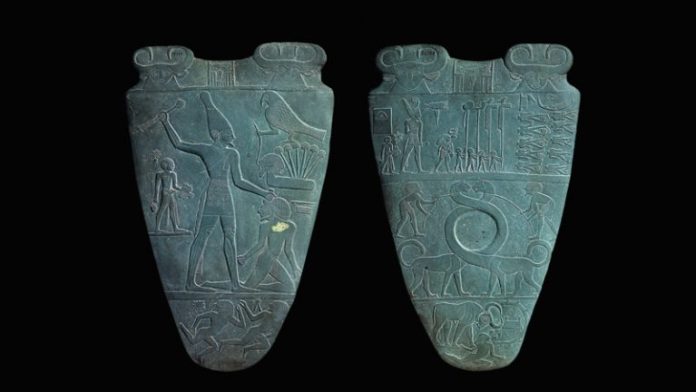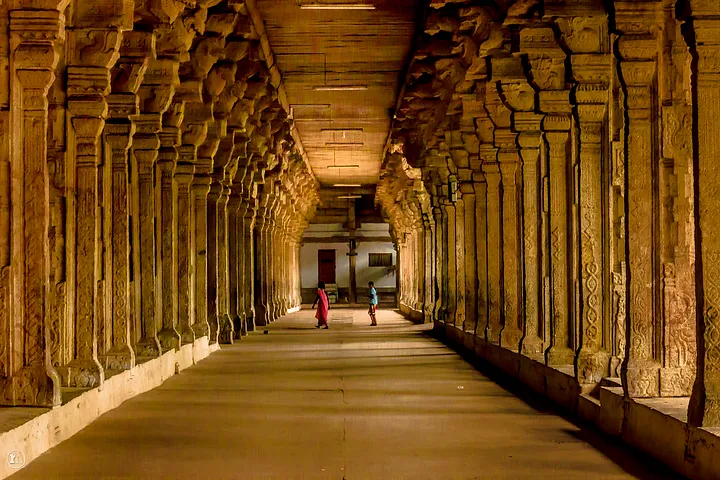Iceland has to be one of my favourite Nordic countries, and the capital city of Reykjavík is no exception. This relatively small country provides visitors with an eclectic Scandinavian vibe coupled with some of the most stunning geographical landscapes I’ve ever had the good fortune of marvelling at.
Iceland is widely renowned for its beautiful scenery, offering up plentiful opportunities to get out those hiking boots and hit the trails. You might already be familiar with the fact that Iceland straddles two tectonic plates, the Eurasian plate, and the North American plate — to me, it’s mind-boggling. It felt so cool to be able to jump like a hopscotching child from one plate to another, feeling as though I was reliving my school geography lessons.
If you hop back onto the North American plate, on the southwest coast, you’ll find the city of Reykjavík. Reykjavík not only provides visitors with an exciting city itinerary but can also be used as starting point for exploring the rest of Iceland’s infamous beauty.
Reykjavík has recently become an essential part of any European bucket list. There’s just something about that city… I’m not sure whether it was the fresh sea breeze, the adventurous ambience, the adorable, coloured roofs or the rumours of elves and fairies that tickled my travelling taste buds, but Reykjavík definitely hit the spot.
So, let’s dive into those glacial Icelandic waters, explore museums from the traditional to the completely absurd, nibble on some Reykjavík favourites and then finish off with a refreshing dip in a geothermal lagoon.
Please note: prices are listed in Icelandic Króna (1,000 ISK is roughly $7.90)
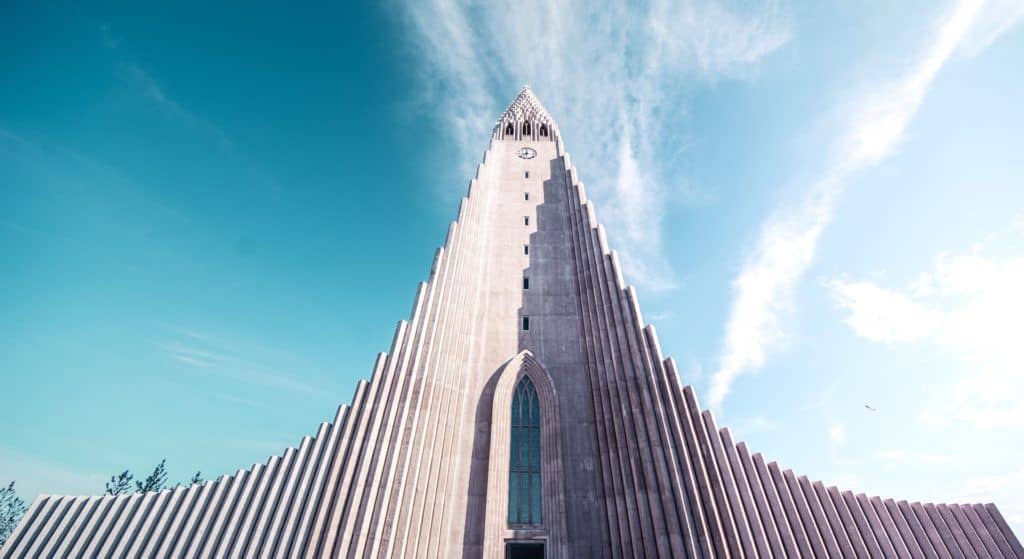
MARVEL AT HALLGRÍMSKIRKJA
Before we dive into the wonders of this first Reykjavík must-see, I want to just take a moment to appreciate the difficulty that comes from attempting to pronounce all of these amazing Icelandic names.
So, let’s start with Hallgríms–kirkja — apparently it’s easier to say like that (she writes, still unable to pronounce it properly).
In most cities I’ve visited, a church trip has been on the agenda, however I can recall none that have been quite as intimidatingly impressive as Hallgrímskirkja. As I approached the outside of this impressive yet imposing church, I felt an instant chill (and not from that ocean breeze). It was eerie, like I’d been transported to a gothic version of Orwell’s 1984. An unexplainable silence seemed to linger around the place, only adding to Reykjavík’s mysterious aura.
As I walked inside the impressive structure, my eyes were instantly forced upwards towards the modern gothic arches. Somebody told me that Hallgrímskirkja was actually designed to mimic the volcanic basalt that Iceland is so famed for, and I can definitely see why.
Then suddenly, BOOM! The organ had begun; a sound so intense that it reverberated off the oddly shaped walls and through my very being. A sound that admittedly induced a low-to-moderate squeal of shock on my behalf.
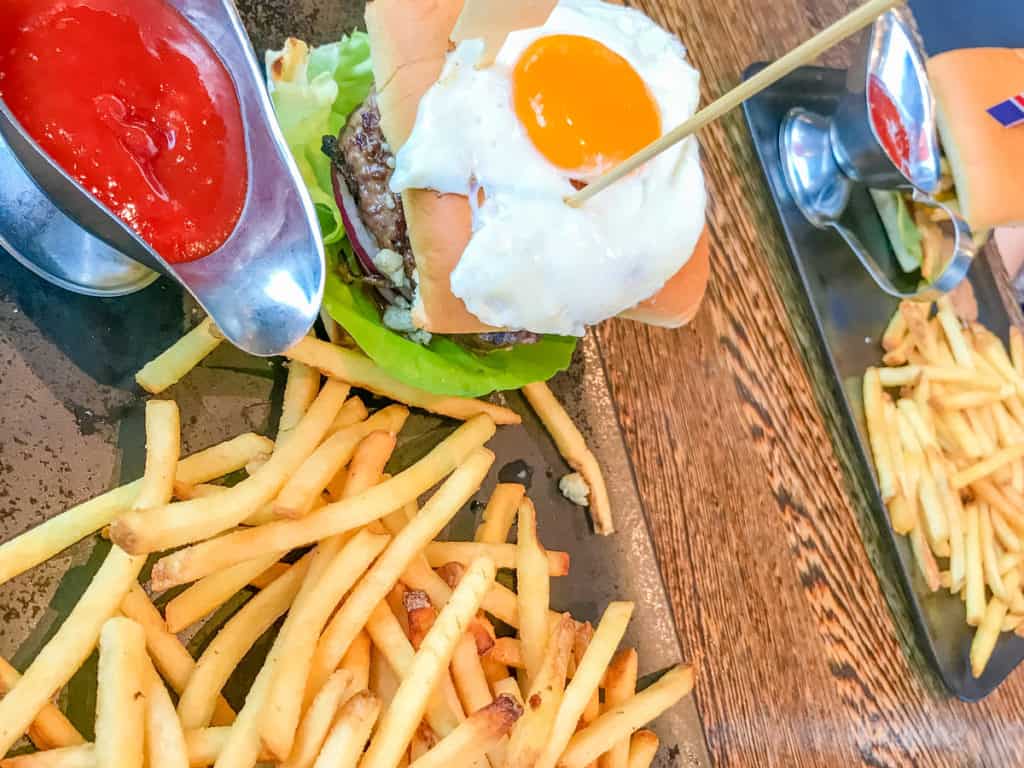
If you want to be there for the organ playing, try your luck on a Thursday or Saturday between 12.00 – 12.30 p.m., and Sundays from 5 p.m. Entry to the church is free (hooray!) but if you want to venture up to the tower, you’ll need to purchase a ticket, costing 1,000 IKR. From the top you can enjoy some excellent 360° views of Reykjavík.
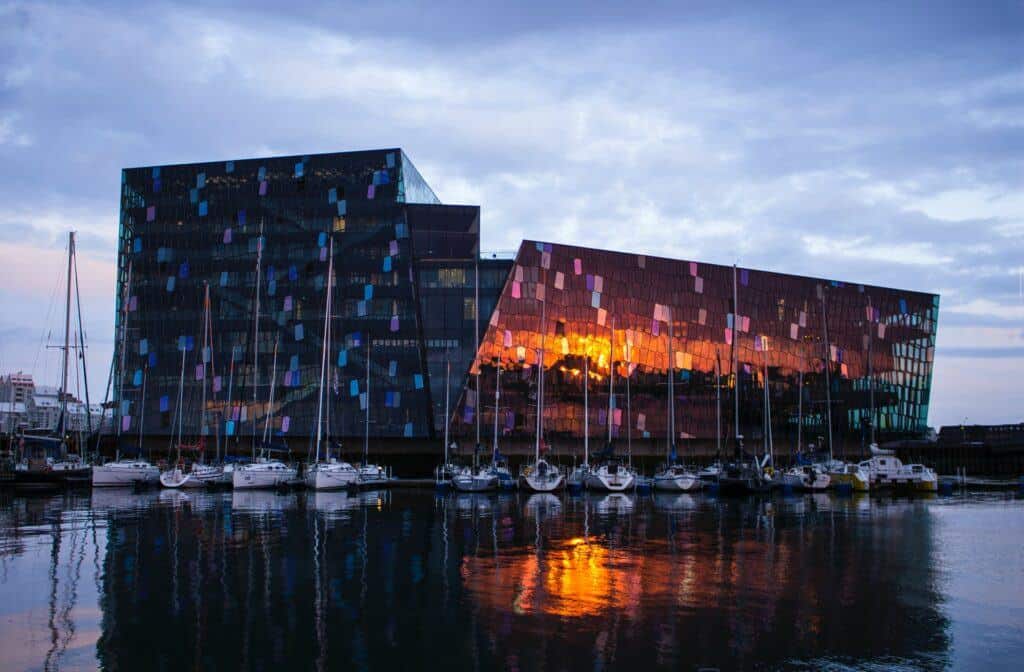
HEAD TO HAMBORGARAFABRIKKAN
Can you imagine if all words were 19 letters long? Hamborgarafabrikkan is a — you guessed it! — hamburger restaurant, located on Höfðatorg 2 and 105 Katrínartún, very close to the coast.
Now I won’t claim that this is the best burger joint in the world, but if you pay it a visit, you’ll be eating your dinner with a hearty dollop of history.
It was in this spot, back in 1987, where President Ronald Reagan and Soviet leader Mikhail Gorbachev jointly signed the Intermediate-Range Nuclear Forces Treaty (INF), which brought about the end of the infamous 45-year Cold War. Now, maybe it was the relaxed atmosphere of Reykjavík or a good helping of fries that sealed the deal, but whatever it was, it worked, and now you can absorb the history whilst tucking into your lunch and then popping across to the next of Reykjavík’s must see places.
HARPA CONCERT HALL AND THE OLD HARBOUR
Just a 20 minute walk from Hamborgarafabrikkan is the shining geometric glass building that is the Harpa Concert Hall. This impressive building is perfect to visit after some rain, or in the setting sun, for a spot of reflection photography.
Home to the Icelandic Symphony Orchestra, there are concerts and conferences held throughout the year here, so be sure to check out what’s on while you’re there. While you’re there, I recommend extending your walk a little further, over towards the old harbour.
For me, no matter where I go, there’s always something satisfying about having an evening stroll around a harbour filled with bobbing boats. If you were feeling peckish at this point, you could also grab some fish and chips and find a spot for sunset.
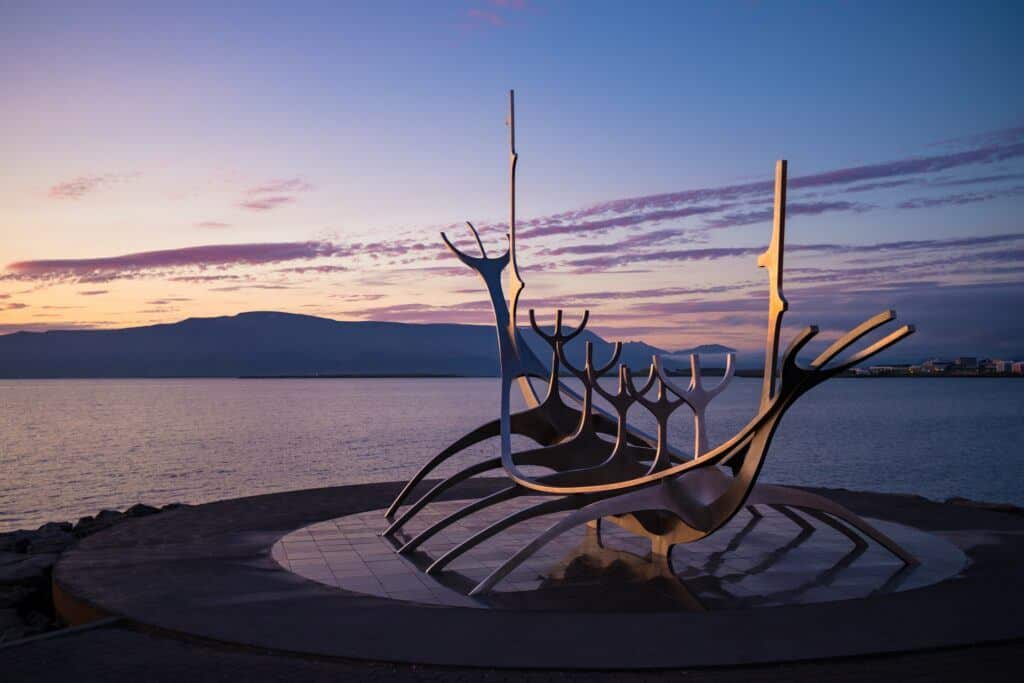
THE SUN VOYAGER STATUE
The Sun Voyager Statue is also located in close proximity to Hamborgarafabrikkan, so why not take a look at this skeletal sculpture?
Designed by sculptor Jón Gunnar Árnason, it bears resemblance to a Viking long boat and is a dedication to the sun. Minimalist and inherently Nordic in style, the Sun Voyager has become an iconic site of Reykjavík.
Not that my artistic advice is anything to go by, but this sculpture is, I would say, only worth visiting if you go to the Harpa Concert Hall. Viewing the sculpture obviously doesn’t take long and so I would suggest tagging it on to your day’s other activities.
REYKJAVÍK’S STREET ART
Now, if there is street art to be had, I’ll be there. I just love it. There’s something about the roughness, impressive detail, and questionable legality surrounding street art that leaves me eager to explore. It also results in me having visions of myself dressed in a balaclava, armed with a can of spray paint and creeping around town.
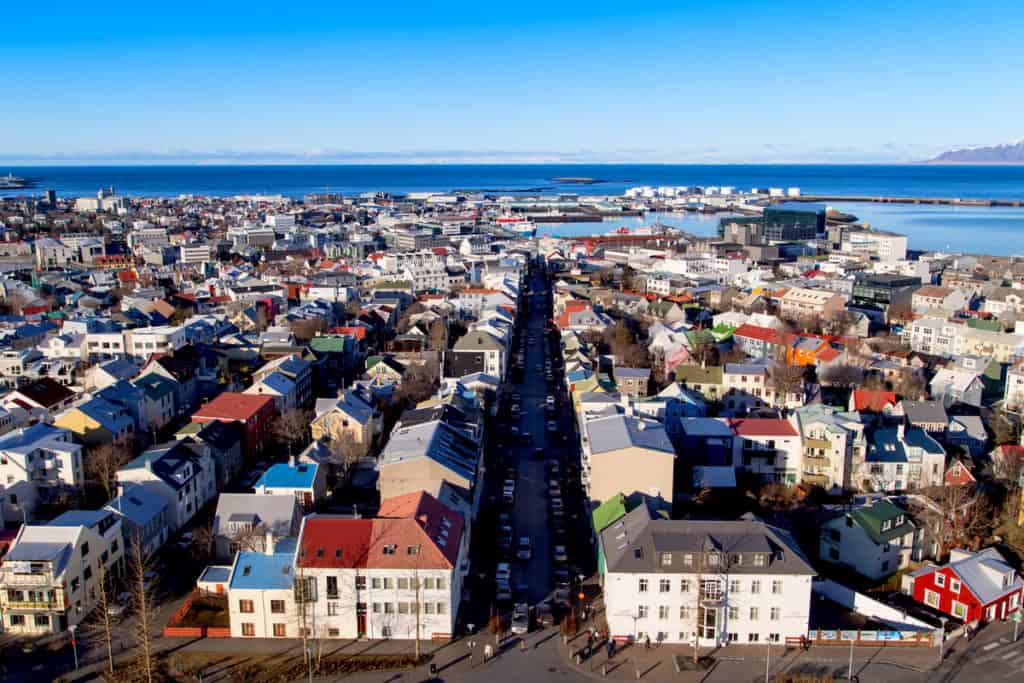
Simply wandering around the city is a great way to discover Reykjavík’s somewhat illicit artistic gems, however to make things a little easier for you, here are the names of a few places you may want to be on high alert for street art: On Laugavegur street (the main shopping area), you’ll see a number of pieces, as well as Frakkastígur, Njálsgata, and Ægisgata.
LAUGAVEGUR
Laugavegur, also known as main street, is not to be confused with the stunning Laugavegur hiking trail in Southern Iceland. Laugavegur, Reykjavík, is the main shopping street in the capital.
If you’re feeling the need for a spot of retail therapy, this is the place for you. One of the oldest streets in Reykjavík, it’s a refreshing change from sights like the ultra-modern Harpa Concert Hall or the alien-like Perlan (more on that later!). Art, fashion, homeware, restaurants, and bars: Laugavegur has the lot and is certainly a go-to place for evening entertainment.
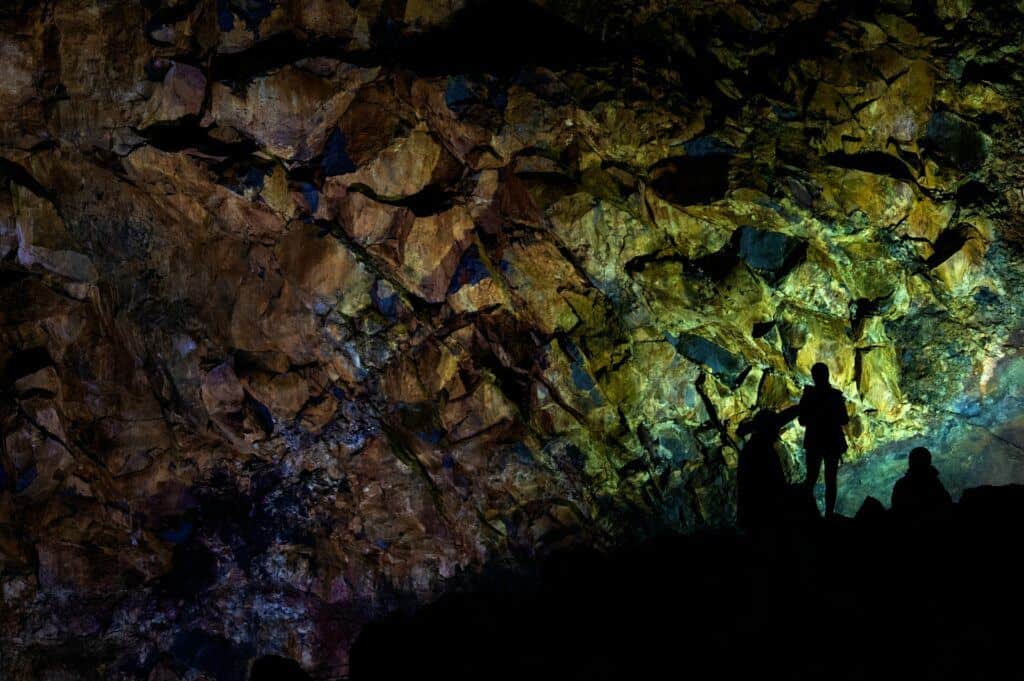
DESCEND INTO A DORMANT VOLCANO: VISITING THRÍHNÚKAGÍGUR
A trip to Reykjavík cannot, in my opinion, be considered complete without a venture outside the city for an unforgettable volcanic experience. I still look back on this memory fondly, an anecdotal gem, a real dinner party pleaser, but at the time, this trip was mostly being viewed through a veil of basaltic rock speckled with blood.
But I’m getting ahead of myself.
Located 35km outside of Reykjavík, the Thríhnúkagígur Volcano is a 213m deep dormant volcano. Admittedly from the outside, this volcano doesn’t possess the classic beauty of Mount Fuji. In fact, in comparison it looks more like a pathetic mound of rock. However, the beauty is not found on the exterior of Thríhnúkagígur, but in the magma chamber within.
When visiting Reykjavík, I can recommend no better outdoorsy trip than this one. Booked through Get Your Guide, this tour offers up a 45-minute hike (with a guide) to the mouth of the Thríhnúkagígur volcano, where you’ll then climb on to a manmade shaft that lowers you deep into the volcano’s chamber. Costing around 44,500 ISK, this trip is perhaps a little on the pricey side, but unequivocally (despite the trauma) worth every krona.
So. The trauma.
I was actually among some of the first people to do this trip, visiting just weeks after its commencement. The organisers didn’t yet know it, (stood at the small car park), but they were in for quite the experience as well. As I said, the walk to the volcano took about 45 minutes, and it was a pleasant and easy one — well apart from the terrain. That was a little, let’s say, rough around the edges. Can you see where this is going?
Ridiculously close to nearing the end of our walk, with the volcano in sight, I decided it would be a very good idea (or maybe gravity decided) to become personally acquainted with the ashy black dried lava.
I face planted.
I well and truly, and with considerable force, fell face-first on to jagged, ashy, black, dried lava.
Blood instantly began to flow from my face in the most dramatic manner and my first question was: “Is my camera ok?” It was, thank goodness, because otherwise how was I going to be able to document this epic incident? Flowing, rather ironically, like molten lava flows from an erupting volcano, blood continued to spew from my face.
The very-professional-but-completely-dumbfounded guides started to jump into action mode. Bandages were applied, new ones were reapplied and eventually taped onto my face. Then there was talk of helicopters and an emergency evacuation to a hospital in Reykjavík. My second sentence was: “No, no, no, I am going down that volcano, whether you like it or not!”
A considerable while later, after the blood was stemmed, I was able to descend into the Thríhnúkagígur volcano.
I can honestly say, both at the time and retrospectively, that although I missed a ride in a helicopter, this experience was mesmerising. The descent through the throat of the volcano into the magma chamber was the equivalent of the height of the Statue of Liberty. An assortment of deep reds, vivid oranges, and garish yellows meet your eyes as you’re lowered into this vast chamber. It was both terrifying and exhilarating to think that I was standing inside a dormant volcano, which could still erupt at some point in the future. Geographical mind blown.
If you were interested to know what happened to my bloodstained, mangled face. Well, I ended up with 9 stitches across both my nose and the underneath of my eye, although as the doctor said, “It could have been many more. You were a mess, but I didn’t want you to look ugly.”
Remember those difficult to pronounce Icelandic words I was talking about earlier? Well I think I received a compulsory crash course of final year Icelandic medical jargon while being pinned down to an operating table, and it was one of the most alarming hospital experiences of my life (and I’ve been to a Vietnamese hospital’s bike accident ward).
A trip to an Icelandic hospital does not feature on this list of things to do in Reykjavík, however I must tell you that it was an experience in itself.
10/10 epic volcano experience accompanied by a 10/10 anecdotal gem!
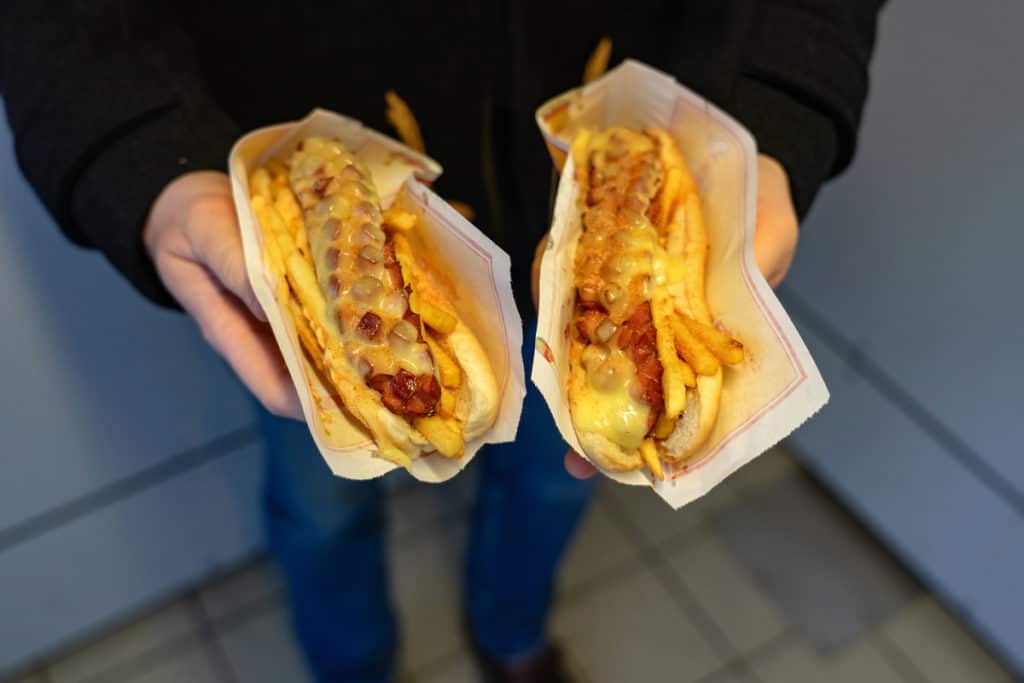
TRY ICELANDIC HOTDOGS
A hot dog? From Iceland? Aren’t we meant to be trying fermented shark, sheep’s head jelly or ram testicles?
Although not traditionally what comes to mind when thinking of Icelandic cuisine, these Icelandic hot dogs are not your American style mustard covered sausages in a bun. They resemble the good old classic, but these hot dogs are actually made of lamb meat and served with a plethora of sauces and toppings. These hot dogs were truly delicious and, in my opinion, far more tantalising for those tastebuds than the original.
There are a few places to get these lamb hot dogs from, but the Bæjarins Beztu hot dog stand is by far the best. Located on Tryggvagata 1 street keep your eyes peeled for a small tin roof stand or just follow the queue or alternatively the wafting smell of deliciousness.



